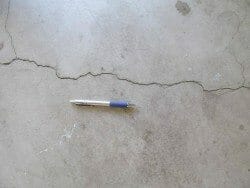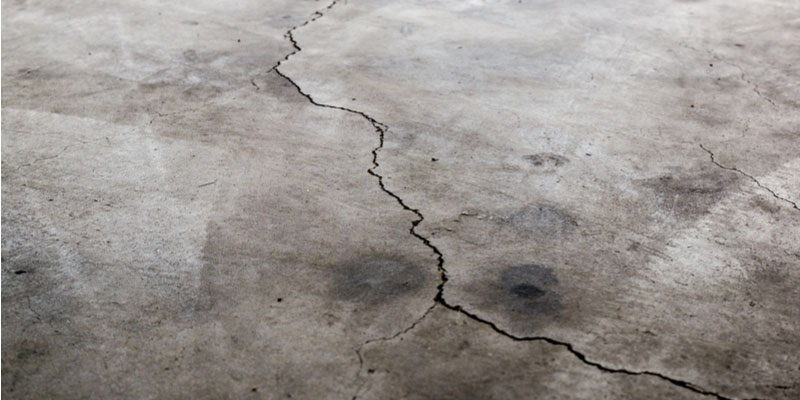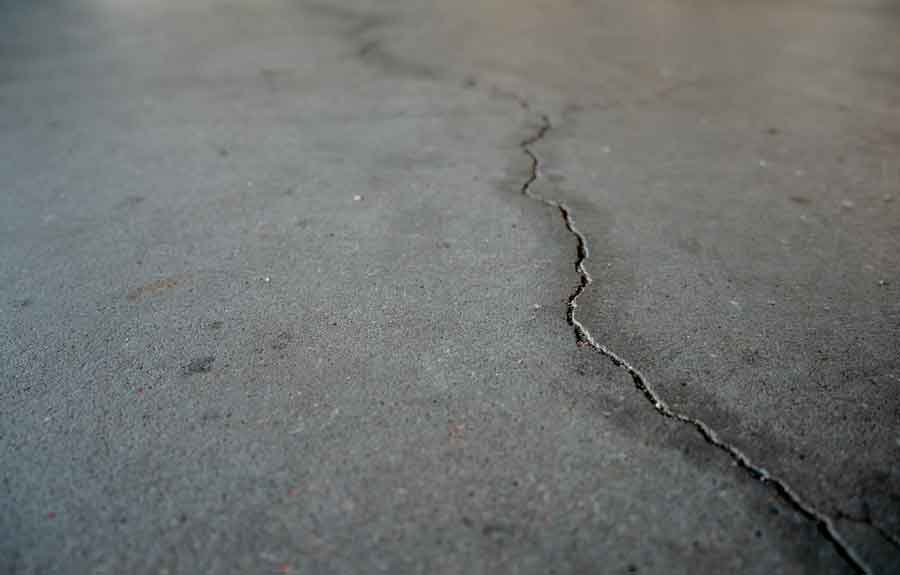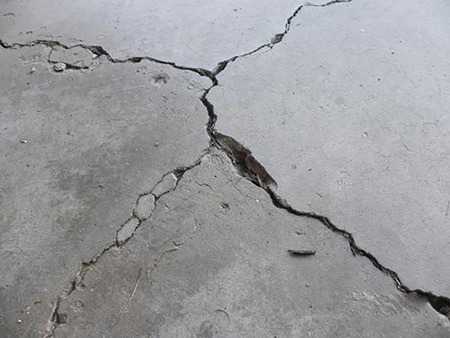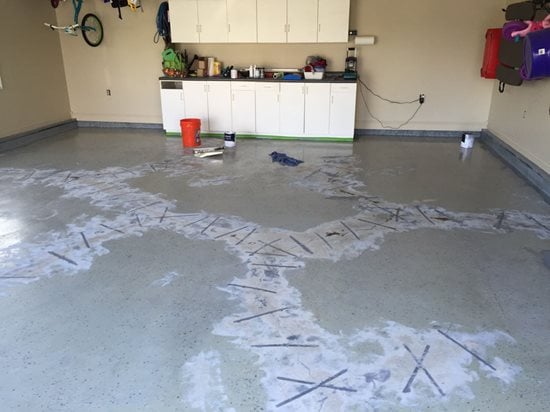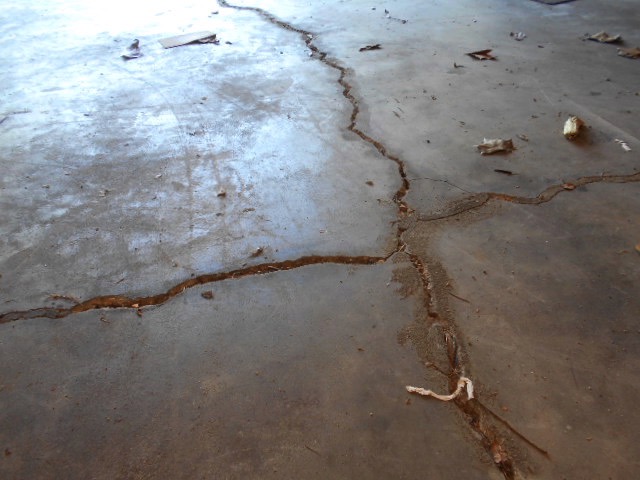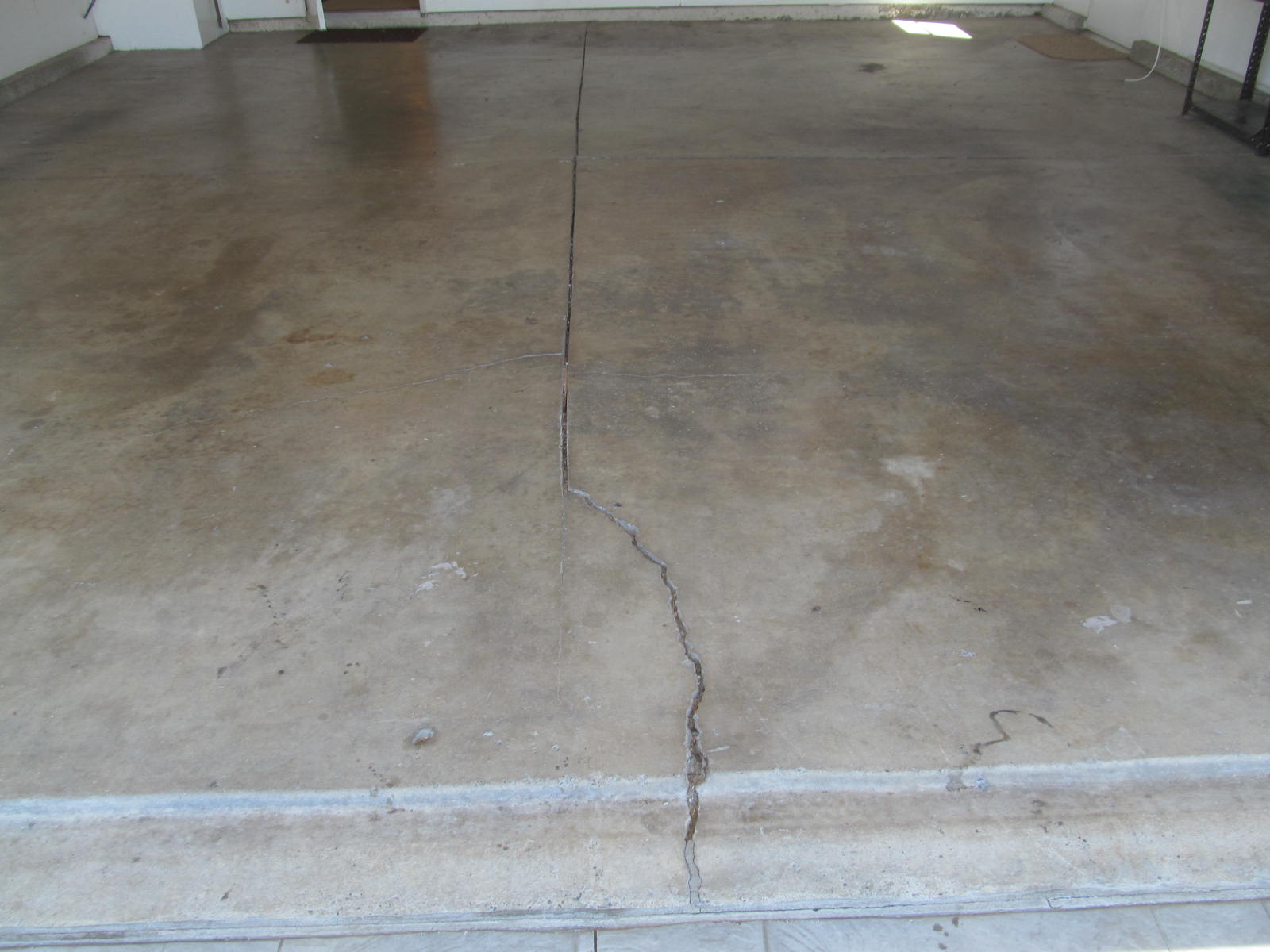Understanding the Causes of Garage Floor Cracks
There are several factors that can contribute to the development of cracks in garage floors. Understanding these causes is crucial in order to effectively address the problem and prevent further damage.
- Poor Installation: Improper installation of the garage floor can lead to cracks. If the floor was not properly prepared or the concrete was not mixed correctly, it can result in weak spots that are prone to cracking.
- Settlement: Settlement occurs when the ground beneath the garage floor shifts or sinks. This can be caused by various factors such as soil erosion, poor soil compaction, or changes in moisture levels. As the ground moves, it can put stress on the concrete, leading to cracks.
- Heavy Loads: Garages often bear heavy loads, such as vehicles or heavy machinery. Over time, the constant weight and pressure can cause the concrete to crack, especially if the floor was not designed to withstand such loads.
- Temperature Changes: Fluctuations in temperature can cause the garage floor to expand and contract. This expansion and contraction can result in stress on the concrete, leading to cracks. This is particularly common in regions with extreme temperature variations.
- Chemical Exposure: Exposure to certain chemicals, such as oil, gasoline, or deicing salts, can weaken the concrete and make it more susceptible to cracking. These chemicals can penetrate the surface of the floor and cause deterioration over time.
- Poor Maintenance: Neglecting regular maintenance can also contribute to the development of cracks in garage floors. Failure to seal the concrete, for example, can allow water to seep in and cause damage. Similarly, ignoring minor cracks and allowing them to worsen can lead to more extensive damage in the long run.
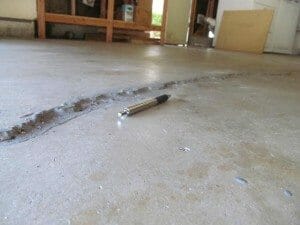
Common Types of Garage Floor Cracks and Their Implications
Garage floors are prone to developing cracks over time due to various reasons. These cracks not only affect the aesthetics of the floor but can also lead to more serious problems if left untreated. Understanding the common types of garage floor cracks and their implications can help homeowners identify the issue and take appropriate measures to address it.
Hairline cracks: Hairline cracks are thin cracks that are barely visible to the naked eye. While they may seem harmless, hairline cracks can widen and deepen over time, especially if subjected to heavy loads or temperature fluctuations. If left untreated, these cracks can allow water and moisture to seep into the concrete, leading to further damage and weakening the foundation.
Settlement cracks: Settlement cracks occur when the soil underneath the garage floor shifts or settles. These cracks are usually wider and deeper than hairline cracks, and they can be an indication of a more significant underlying issue with the soil or foundation. If not addressed, settlement cracks can cause structural problems and compromise the stability of the entire garage.
Shrinkage cracks: Shrinkage cracks commonly occur in newly poured concrete floors as the water in the mixture evaporates and the concrete shrinks. These cracks are typically small and may appear in a random pattern. While shrinkage cracks are relatively common and usually not a cause for concern, they can still allow water penetration and should be sealed to prevent further damage.
Spalling: Spalling refers to the flaking or chipping of the garage floor’s surface layer. This can occur due to freeze-thaw cycles, chemical exposure, or poor concrete mixtures. Spalling not only affects the appearance of the floor but can also lead to more extensive damage if not addressed promptly. It is crucial to repair spalling areas to prevent further deterioration and potential safety hazards.
Structural cracks: Structural cracks are typically wider than hairline cracks and may indicate a significant problem with the garage’s foundation or structure. These cracks can occur due to excessive load, poor construction, or underlying soil issues. Homeowners should seek professional evaluation and repair if they notice structural cracks to prevent further damage and ensure the safety of the garage.
How to Prevent and Repair Garage Floor Cracks
Preventing Garage Floor Cracks:
One of the best ways to prevent garage floor cracks is to ensure proper installation and maintenance. Here are some steps you can take to prevent cracks from forming in your garage floor:
1. Prepare the subbase: Before pouring the concrete for your garage floor, make sure the subbase is properly prepared. This includes removing any vegetation or loose soil, compacting the soil, and adding a layer of gravel or crushed stone for proper drainage.
2. Reinforce the concrete: To enhance the strength and durability of your garage floor, consider reinforcing the concrete with wire mesh or rebar. This reinforcement will help distribute the weight and prevent cracking.
3. Control joint placement: Control joints are planned cracks that help control where the concrete will crack. They are typically placed in areas where cracks are likely to occur, such as corners or near doorways. By strategically placing control joints, you can minimize the chances of random cracks forming.
4. Use proper curing techniques: Properly curing the concrete is essential to prevent cracking. This involves keeping the concrete moist and at the right temperature for a specific period of time. Follow the manufacturer’s instructions for curing the concrete to ensure optimal results.
Repairing Garage Floor Cracks:
If cracks have already formed in your garage floor, it’s important to address them promptly to prevent further damage. Here are some steps you can take to repair garage floor cracks:
1. Clean the crack: Start by thoroughly cleaning the crack with a wire brush or a pressure washer. Remove any loose debris, dirt, or oil to ensure proper adhesion of the repair material.
2. Fill the crack: Use a concrete patching compound or an epoxy resin specifically designed for repairing cracks. Follow the manufacturer’s instructions to mix the material and apply it to the crack. Use a trowel or putty knife to fill the crack completely.
3. Smooth the surface: Once the crack is filled, use a trowel or a putty knife to smooth the surface of the repair material. Make sure it is level with the surrounding concrete to achieve a seamless finish.
4. Allow for proper curing: Give the repair material enough time to cure and harden according to the manufacturer’s instructions. This may involve keeping the repaired area moist and protected from foot traffic for a certain period of time.
Professional Solutions for Permanent Garage Floor Crack Repair
When it comes to repairing garage floor cracks, it is crucial to seek professional solutions that provide a permanent fix. While DIY methods might seem cost-effective initially, they often fail to address the underlying causes of the cracks and provide only temporary relief. Professional crack repair services offer several advantages in terms of expertise, quality materials, and long-lasting results.
Expertise: Professional technicians possess the knowledge and experience to accurately assess the severity and causes of garage floor cracks. They can determine whether the cracks are merely cosmetic or indicative of more significant structural issues. This expertise allows them to provide tailored solutions that effectively address the problem at its root.
Quality Materials: Professional crack repair services utilize high-quality materials that are specifically designed for durable and long-lasting repairs. These materials, such as epoxy or polyurethane-based sealants, have superior adhesive properties and can withstand the stresses and movements experienced by garage floors. By using these materials, professionals ensure that the repaired cracks stay intact and do not reappear over time.
Long-lasting Results: Professional solutions for garage floor crack repair offer a permanent fix that prevents future cracking and damage. By addressing the underlying causes of the cracks, professionals can implement solutions that reinforce the integrity of the concrete slab. This not only extends the lifespan of the garage floor but also minimizes the need for future repairs and associated costs.
Garage Floor Crack Repair 101 (Plus When to DIY u0026 When to Call a Pro)
Garage Floor Repair – Keep Your LA Home Safe
Raising & Repairing Hoffman Estates Garage Floor – Concrete Hero
Repairing Common Concrete Slab Problems – Concrete Network
How can I tell if cracks in the garage floor are a problem or not?
Cracked Concrete Floor: Garages or House Slab – Buyers Ask
How do you know if a crack is serious? – Waterstop Solutions
Related Posts:
